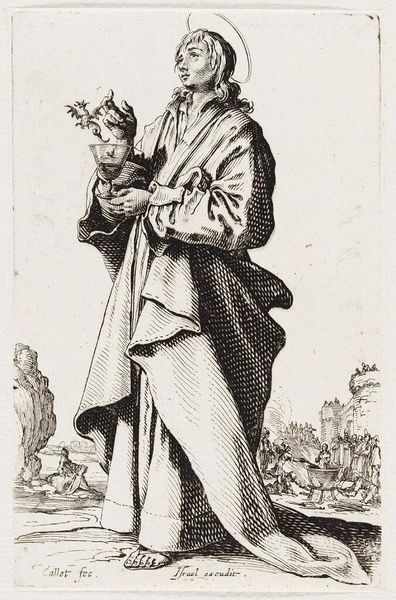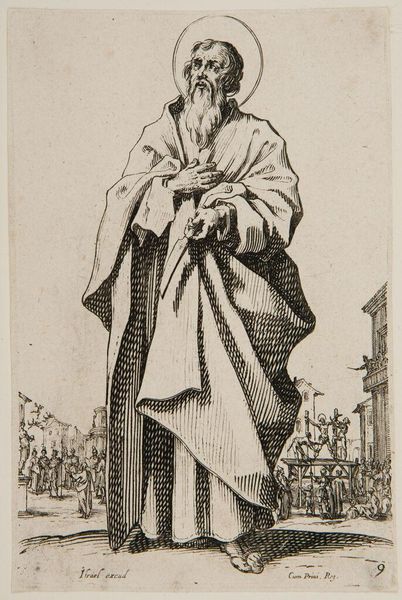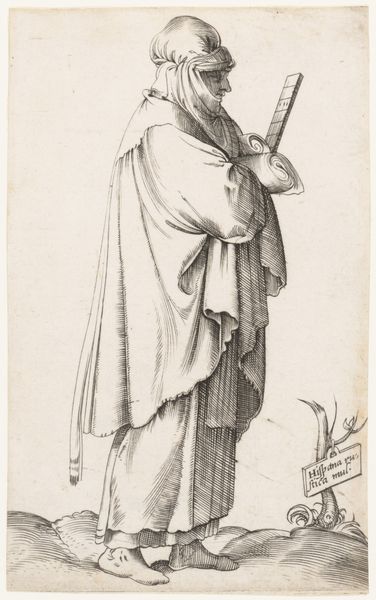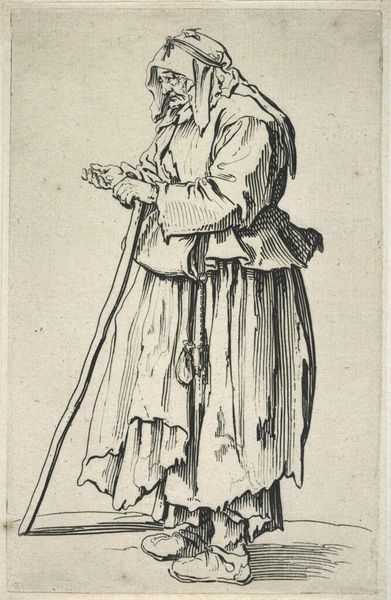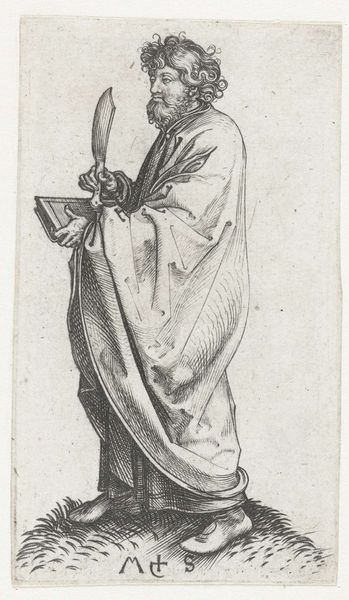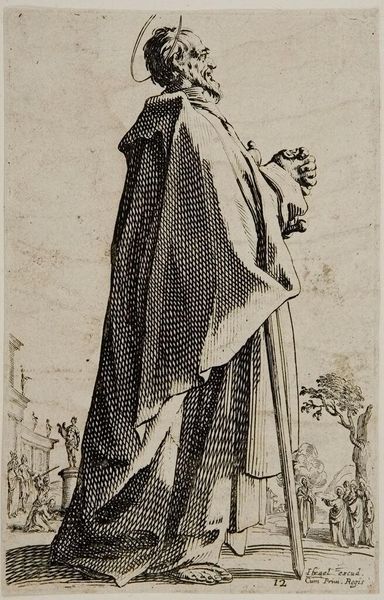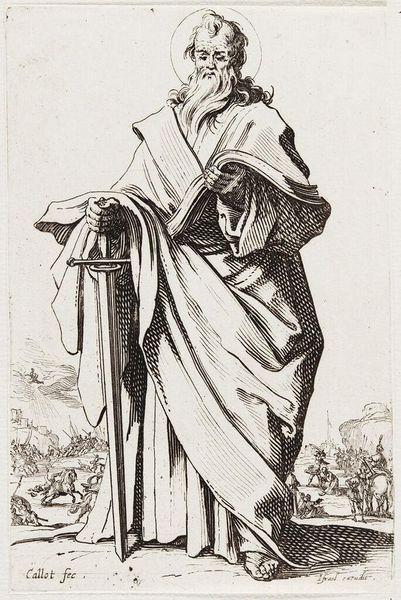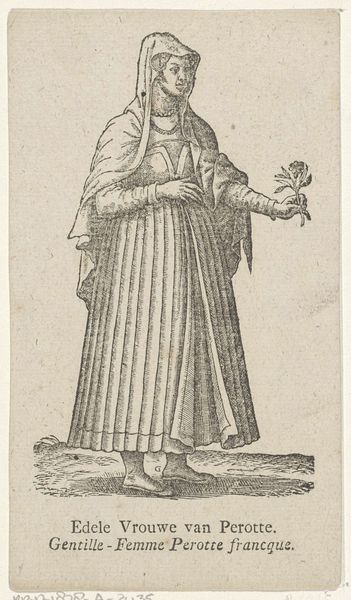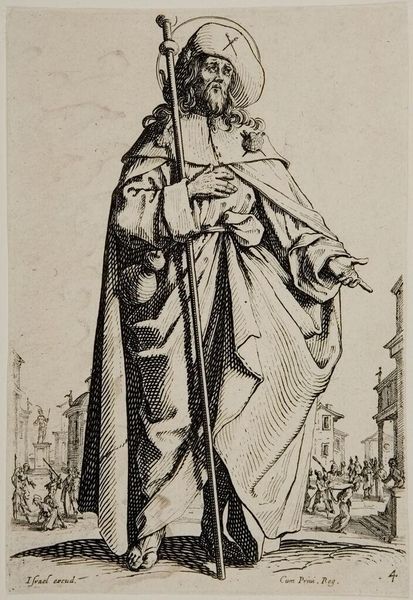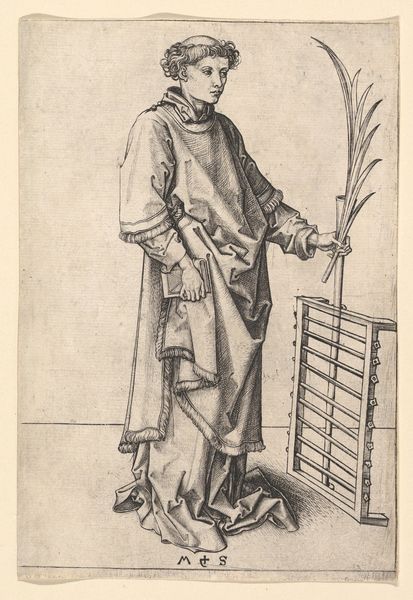
Copyright: CC0 1.0
Curator: Jacques Callot's "Saint John the Evangelist" presents a striking figure, holding a chalice from which a small dragon emerges. Editor: Immediately, I’m struck by the intensity of the etching – the sharp lines create a palpable sense of drama, almost anxiety. Curator: Callot was renowned for his mastery of etching, and the way he uses line here—the density and direction—to simulate fabric and form is impressive. The labor involved is evident in the detailing. Editor: The chalice and serpent are powerful symbols, aren't they? The legend says the priest of Diana poisoned John, but the poison manifested as a dragon and flew away, revealing John’s triumph over evil. Curator: Precisely. And beyond the religious iconography, it’s fascinating how this print would have been made, distributed, and consumed in Callot’s time, shaping perceptions of religious figures through readily available images. Editor: It’s remarkable how such detail and symbolic weight can be conveyed through this readily reproducible medium. The face tells a story of inner turmoil, a saintly struggle, really. Curator: Looking at Callot's process and materials gives us a better sense of the social forces at play in producing and circulating these images. Editor: Indeed, and considering the symbolism allows us to connect with the enduring power of visual storytelling.
Comments
No comments
Be the first to comment and join the conversation on the ultimate creative platform.
